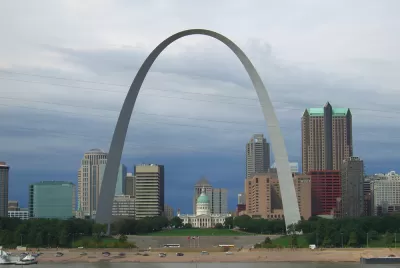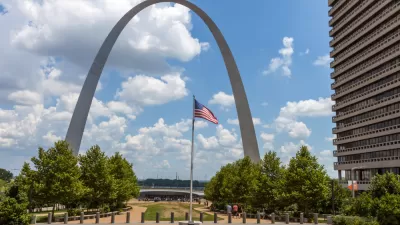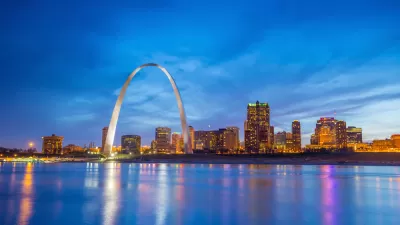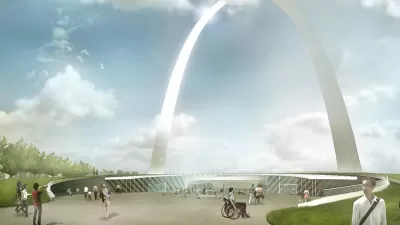Pulitzer Prize-winning critic Blair Kamin assesses the remodeled Gateway Arch in St. Louis, prior to its big public opening on July 3.

The Gateway Arch isn't just a monument to westward expansion—for many it’s a symbol of St. Louis. But in the past, according to a review by Blair Kamin, the monument has "seemed a little removed from the city around it."
For decades, a highway trench and a busy surface street cut off the Arch from nearby downtown. People walking to the Eero Saarinen-designed landmark had to cross narrow highway bridges as cars and trucks sped below. Other visitors would deposit their vehicles in a parking deck on the north side of the Arch’s grounds, take in the 630-foot-tall icon, then leave without ever setting foot downtown.
Kamin's assessment of the newly renovated grounds and museum of the arch will notice how much better the monument now connects to the city (another article by Doyle Murphy posits that the project is also emblematic of a city reconnecting with its river).
The most dramatic new element, a broad land bridge that spans Interstate Highway 44, creates a continuous public park that lets visitors walk uninterrupted from the domed Old Courthouse on one side of the highway to the Arch on the other. Once they cross, they encounter the museum’s new entrance, an elegant and inviting half-circle of metal and glass. New galleries that engagingly tell the story of the nation’s westward drive await below.
In addition to introducing some of the design history of the Gateway Arch, the review also discusses some of the attendance and revitalization benchmarks that will define the success of the project when it's fully reopened.
FULL STORY: Gateway Arch transformed: New landscape, expanded museum better link the icon to St. Louis

Maui's Vacation Rental Debate Turns Ugly
Verbal attacks, misinformation campaigns and fistfights plague a high-stakes debate to convert thousands of vacation rentals into long-term housing.

Planetizen Federal Action Tracker
A weekly monitor of how Trump’s orders and actions are impacting planners and planning in America.

In Urban Planning, AI Prompting Could be the New Design Thinking
Creativity has long been key to great urban design. What if we see AI as our new creative partner?

King County Supportive Housing Program Offers Hope for Unhoused Residents
The county is taking a ‘Housing First’ approach that prioritizes getting people into housing, then offering wraparound supportive services.

Researchers Use AI to Get Clearer Picture of US Housing
Analysts are using artificial intelligence to supercharge their research by allowing them to comb through data faster. Though these AI tools can be error prone, they save time and housing researchers are optimistic about the future.

Making Shared Micromobility More Inclusive
Cities and shared mobility system operators can do more to include people with disabilities in planning and operations, per a new report.
Urban Design for Planners 1: Software Tools
This six-course series explores essential urban design concepts using open source software and equips planners with the tools they need to participate fully in the urban design process.
Planning for Universal Design
Learn the tools for implementing Universal Design in planning regulations.
planning NEXT
Appalachian Highlands Housing Partners
Mpact (founded as Rail~Volution)
City of Camden Redevelopment Agency
City of Astoria
City of Portland
City of Laramie





























